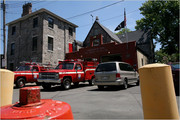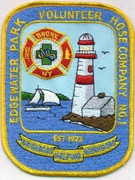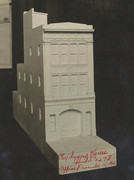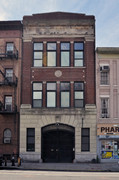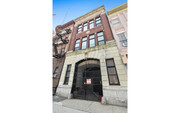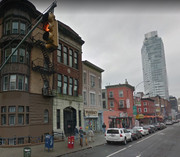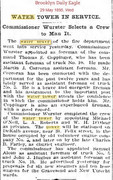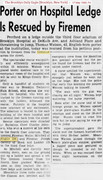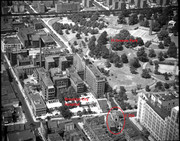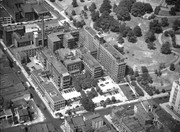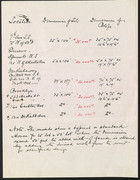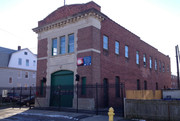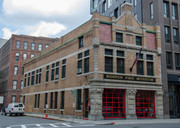grumpy grizzly said:
I used to be a member of the Boston Sparks in the 70's until I moved to Chicago. We had our quarters in South Boston complete with a tapper system to receive box alarms and radios to monitor the surrounding departments. Quarters was destroyed by an arson fire during the time period when Boston almost burned to the ground during an extensive arson cycle. One of the arsonists was refused admittance to the club so he torched the place. The city I believe gave them the old firehouse for their quarters.
Thanks Grump. The 1980s arson ring set at least 163 fires and countless false alarms and nuisance calls.
UPI story:
"Seven Indicted in Arson Wave
By DAVE WOOD | July 25, 1984
BOSTON -- Seven men, including four public safety officers, were indicted by a federal grand jury for setting 163 fires across eastern Massachusetts in 1982, allegedly to protest spending cuts in police and fire protection, the government announced Wednesday.
Authorities said it was believed to be the biggest arson case in U.S. history.
The seven defendants were charged in an 83-count indictment which said the fires in 10 cities and towns caused $22 million in damage and injured 280 firefighters over a 10-month period. No one was killed, but some firefighters were seriously injured or disabled fighting the blazes.
One of the defendants, calling himself 'Mr. Flare,' allegedly wrote a Boston television station during the height of the scare, vowing the arson spree would continue until cuts in fire and police forces were restored, U.S. Attorney William F. Weld said.
'This is the largest arson case in the history of the state and the federal government in terms of the number of fires,' Essex County District Attorney Kevin Burke told a news conference.
Weld said it was believed to be the biggest case of its kind in any state.
He said the primary motive of the alleged conspiracy was to protest the enactment of a state tax-cutting law in 1981, known as Proposition 2 , which put thousands of firefighters and police out of work across Massachusetts.
'The primary motive was to call public attention to the need for more firefighters,' Weld said, but said some of the fires were also set for profit and revenge.
The fires terrorized Boston and other cities across eastern Massachusetts from February to November 1982 -- usually between midnight and 6 a.m.
The blazes occurred in Cambridge, Canton, Chelsea, Concord, Dedham, Fitchburg, Foxboro, Lawrence and Stow, the indictment said.
The buildings, mostly unoccupied at the time, included churches, houses, stores, factories, military barracks and the Massachusetts Fire Academy. But several of the blazes spread to occupied buildings forcing their evacuation.
The worst was the $13 million fire at the Spero Toy Co. in Boston June 3, 1982 which injured 31 firefighters, according to the indictment which was issued Tuesday and unsealed Wednesday.
Five of the seven men were arraigned Wednesday in Boston before U.S. Magistrate Joyce London Alexander.
Gregg M. Bemis, 23, Wayne S. Sanden, 28, both of Boston and Donald F. Stackpole, 28, of suburban Scituate, were all charged with conspiracy, arson and obstruction of justice and ordered held without bail. Bemis and Sanden are both Boston Housing Authority police officers. Bemis was also charged with mailing the threatening letter to a Boston TV station.
Ray J. Norton Jr., 44, a disabled Boston firefighter, and Joseph M. Gorman, 27, of suburban Quincy were charged with conspiracy and aiding and abetting arson. Norton was held on $50,000 bail while Gorman was released on $25,000 bail.
Christopher R. Damon, 27, of Hamilton, Ohio, was charged with conspiracy and ordered held on $15,000 bail by a federal magistrate in Ohio. Leonard A. Kendall Jr., 22, of Acton, Mass., a U.S. Air Force firefighter, was charged with conspiracy, arson and perjury and ordered held on $100,000 bail by a federal magistrate in Georgia.
All of the defendants pleaded not guilty and face prison terms ranging from five to 20 years and fines of up to $20,000."
- http://www.upi.com/Archives/1984/07/25/Seven-indicted-in-arson-wave/1130459576000/
From Legal Appeal:
I. "The Arson Ring
2 The arson conspiracy began in late 1981 when a group of "sparkies"1 decided to employ unusual and illegal means to increase public funding for firefighting and police protection in Massachusetts. They began with vandalism and nuisance fires, breaking windows and setting dumpsters on fire. When these acts failed to attract attention, they escalated to two, three and four alarm fires, torching abandoned buildings, factories, and even a lumberyard.
3 To start the fires the group used a time delay incendiary device they called "La Bomba." La Bomba consisted of a ziplock plastic bag filled with Coleman lantern fuel and placed in a paper bag stuffed with tissue. A lit cigarette threaded through a matchbook, set inside the bag, provided the fuse. The cigarette burned down to the matchbook, which flared up and lit the tissue. The burning tissue then melted the plastic bag, releasing the fuel, and started the blaze.
4 Donald Stackpole joined the group at the beginning, but apparently did not share its goal of promoting public funding; he thought firefighters were overpaid and underworked and merely wanted to harass them. He did share, however, the group's fascination with fires. Ray Norton, Jr. came into the group's confidence in June, 1982, after the vandalism and nuisance fire stage. Norton, a ten year veteran of the Boston Fire Department, was angered by the cuts in public funding which had led to layoffs in his department. While he never set a fire, Norton offered the group support and advice. As the government showed at trial, on at least three occasions Norton recommended to the group the burning of specific buildings. Also, as a member of the Fire Department, Norton was able to track the activities of the arson squad and was thus able to protect the group from detection by the authorities.
5 The conspiracy unravelled when one member, Robert Groblewski, appeared on a T.V. news film of a major fire brandishing a revolver. After observing this bizarre behavior, the arson squad tracked him down, and he ultimately confessed. Groblewski then cooperated with the government in return for a light sentence recommendation. His cooperation included the tape recording of plans by Stackpole and others to spirit him out of Massachusetts. Eventually all the members of the conspiracy, except Stackpole and Norton, pled guilty. Four of them testified against Stackpole and two against Norton.
6 After thirteen days of trial, the jury convicted Stackpole of conspiracy to set the fires, eight counts of the making and possession of an unregistered explosive device, five counts of the arson of an interstate facility by means of fire and explosive and, for his involvement in activities to hide the arson conspiracy, two counts of the attempting to obstruct justice and of conspiracy to obstruct justice. The judge sentenced him to 40 years imprisonment. Norton was later convicted, after a 17 day trial, of conspiracy to commit arson and to manufacture unregistered incendiary devices, arson of an interstate facility, and perjury before the grand jury, for which he received a sentence of 6 years imprisonment. Both appealed to this court."
- https://openjurist.org/811/f2d/689/united-states-v-stackpole






